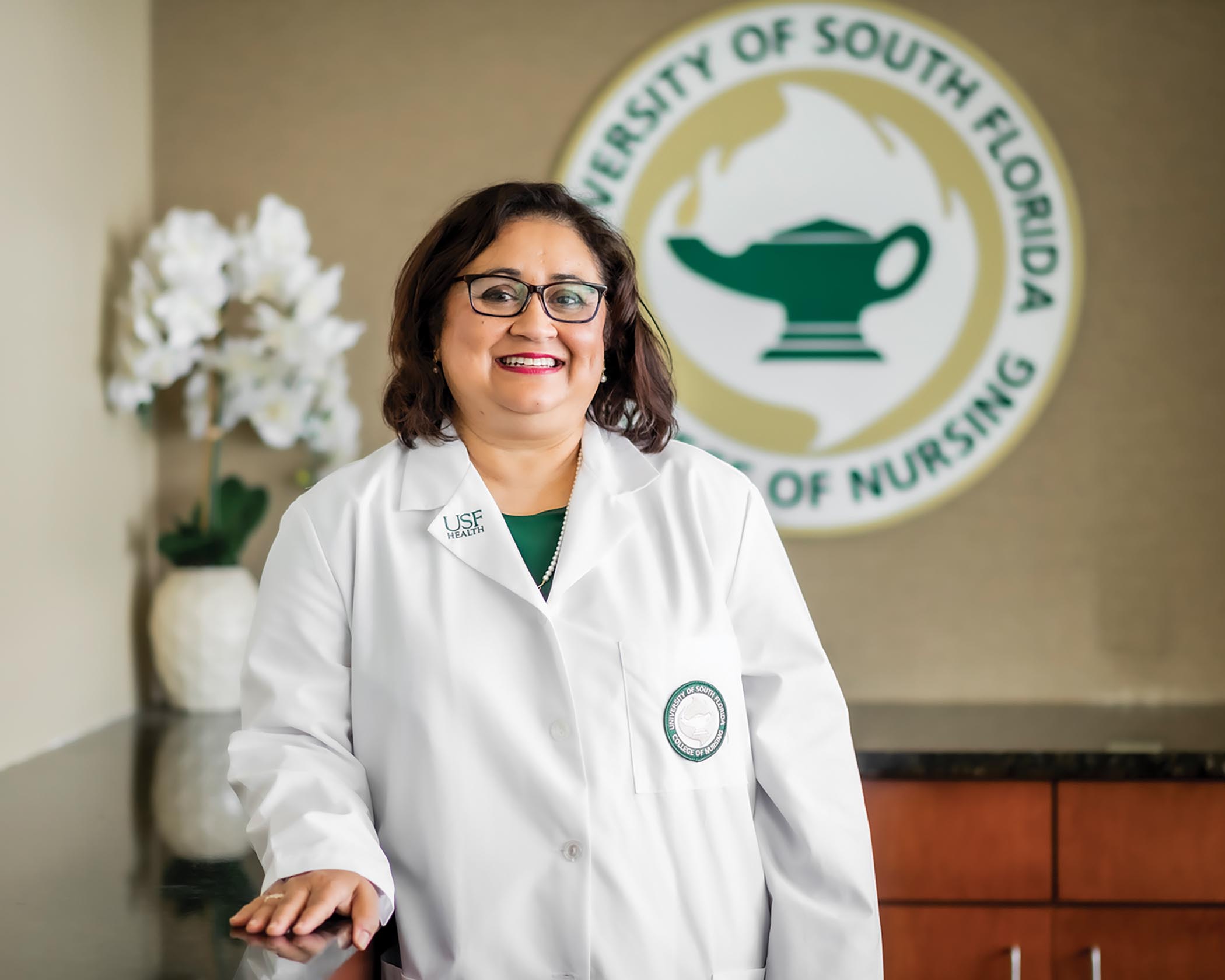We must make a dedicated effort to increase diversity among nursing students at the college and university levels and support the inclusion of underrepresented minority, sexual minority, gender minority, and male student populations. Because of the country’s expanding immigration, increasing globalization, and minority population growth, we must have a diverse nursing workforce to meet the needs of patients and families from all backgrounds and communities.

Data collected in 2020 identified the RN workforce as:
- 9.4% male
- 7.2% Asian
- 6.7% Black or African American
- 5.6% Hispanic or Latino
- 0.5% American Indian or Alaska Native
- 0.4% Native Hawaiian or other Pacific Islander
- 0.2% Middle Eastern or North African
Diversity, equity, and inclusion are intentional and deliberate, and they do not happen by chance. The University of South Florida (USF) has several initiatives to increase diversity among our student population, including:
- Forming our first Asian Pacific Islander Desi Americans faculty and staff committee
- Creating our diversity, equity, and inclusion action plan, which prepares a diverse nursing workforce by intentionally threading diversity and inclusion content in the classroom
- Developing the Advancing Latino Access and Success Task Force in 2021, which strategically supports USF’s work toward federal designation as a Hispanic-serving institution
- Partnering with local community organizations, such as the Best Expansions Scholastic Training Academy, to support Magnet programs that primarily serve students of color to increase diversity in healthcare professions
- Appointing our first chief officer of diversity, equity, and inclusion at USF College of Nursing in 2020
- Celebrating different cultures through Hispanic Heritage Month, Asian American and Pacific Islander Heritage Month, and Black History Month
Eliminating barriers like college education costs, inadequate primary and secondary educational preparation, inherent institutional bias, admission policies, and limited diversity in leadership and faculty is also critical to increase student diversity.
However, the national faculty shortage has added to our challenges. Students feel isolated in majority groups, less understood, and less part of the community when they feel they are not represented in academic institutions. When students are taught by faculty who represent the communities they may serve, they have a better understanding of the social determinants of health and nuances of care for people of different backgrounds. Like many schools of nursing, we have room to increase our faculty diversity.
In 2021, USF welcomed the largest, most diverse, and highest-achieving class of first-year students in university history. This is an exciting time for nursing institutions, but we have a long way to go to ensure that the nursing workforce represents the communities we serve. Yet I firmly believe that supporting underrepresented students in nursing, nursing faculty, and local and national leadership positions will positively influence health outcomes in patients with cancer.






